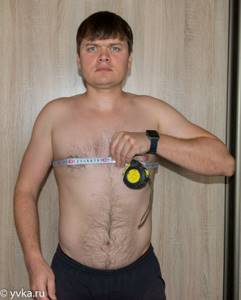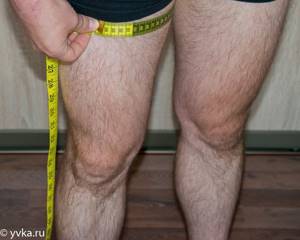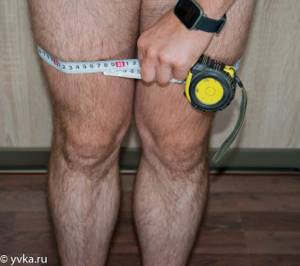The need for a journal entry
The logbook has two purposes:
- Planning your own classes.
- Track progression, analyze and regulate physical activity.
This is viewed as a collection of digital data and noteworthy records. Powerlifting requires fixation of increasing weights. Fitness bikini. For this purpose, you should control the number of approaches and exercises, as well as take measurements of body parts. By appointment, you will be able to analyze the planned training and create a new one, taking into account your training and physiological data.
The journal plays an important role during self-control and independent verification of achievements. If you let the data from your own classes in the gym take their course, you will not be able to soberly assess the effectiveness of the classes and your achievements. Recording data will help track errors, positive results and direct your capabilities in the right direction.
Why do you need a diary?
Keeping a diary is relevant for both beginners and professionals. Its main goal is to select the most effective training program, taking into account the individual characteristics of a person and other data. It is needed to develop a training plan, monitor the training process and evaluate the results. The diary records the exercises performed, the number of approaches and repetitions, working weights and other information. Thanks to it, you can monitor the dynamics of the effectiveness of the training program and, if necessary, adjust it.
Registration of records
A sample diary according to disciplinary development.
- Day of the week, date, month.
- Class hours (start and end).
- Planning lessons.
- Names of exercises, number of repetitions, time spent on completing the task, duration of delays between executions and...
- Weight at work.
- Time spent warming up and cooling down.
It is necessary to record the physiological state in a journal. Some measurements take place once a month, others during each lesson in the gym.
The following parameters are entered:
- Weight indicators at the beginning of work and after.
- How often the heart muscles contract, pressure readings; before the start of the workout, during it, at the end.
- Changes in the volume of body parts.
- Sports nutrition, daily menu.
- Morning blood sugar levels. Before work in the gym and after finishing. Measurements are taken twice every seven days.
- Recording your energy expenditure throughout your activities will also be helpful.
- Record the execution of the exercises by the end of the training in terms of strength (the last approaches were difficult, easy). In this case, you will know to increase or decrease the number of tasks completed.
- Celebrate successes or failures with evaluation.
How does Staminity work?
How Staminity works: Job Scheduling – Execution – Analysis
- Scheduling tasks. In the training diary, the athlete sees his individual training plan. The tasks are planned by the coach or the athlete independently, or the tasks are included in the calendar from the training plan.
- Execution of trainings and automatic loading of the fact . Workouts recorded by your sports watch or smartphone are automatically downloaded and matched to your plan.
- Analysis of training and adjustment of the plan. The coach monitors the preparation process, analyzes completed workouts and, taking into account the athlete’s condition, adjusts the plan.
Let's start our review of the service with the computer version.
How to write a diary
The ideal bodybuilding diary looks like this:
- Time stamps (training time, seven-day day, month, date)
- Burdening weight. Achievements.
- Contents of program tasks.
- Condition of the body.
- Weight indicators.
Here's everything you need to write down during your workouts. But! There are no clear rules for keeping records; everyone approaches this issue individually. It is most effective to divide the exercises performed into basic and isolating ones. Don’t keep dry notes, add for yourself; heart rate measurement, tone level, training assessments, minor injuries and other things that are meaningful to you.
Bodybuilders should know:
- It’s very good if you gradually increase the working weights during each lesson.
- The program must be worked through to the end and only after that the results are displayed.
- Introduce innovations as they become available.
- Practice dynamic change.
The program is drawn up, the journal is kept, and after that, three months later, you need to really give your work a well-deserved assessment. Usually for men it all comes down to gaining muscle mass and strength results.
For girls - losing weight and normalizing the muscle groups of the lower body. Adequacy in assessing weight, body parameters, and body condition is important. Along with your workout log, you should also keep a nutrition log. The main thing is to develop the habit of taking notes at each training session and then you will clearly see your achievements.
Bodybuilding training diary.
A bodybuilding training diary plays a very important role when working out in the gym, since it is kept based on your training and its effectiveness, in the diary you must record all your training activities and results. As a result, you will have the opportunity to analyze the effectiveness of a particular training or nutrition program. Since this will be both a diary of both training and nutrition.
An individual training diary will give you the opportunity to see in what period of time you had the best results and the greatest progress, which training program was the most effective and in combination with which diet. Or vice versa, you will be able to see which system turned out to be the least effective in gaining muscle mass and volume. Every athlete needs a training diary, or rather not himself, but the opportunity to review the training process, after a certain period of time, and draw conclusions. But we need them to build an ideal training program that best suits our characteristics.
You can consider your bodybuilding training diary your personal trainer, who will help you achieve the desired bodybuilding results.
In the diary itself, you should diligently record all the moments relating to your training, as well as events and circumstances that happened to you outside the gym, but may be related to training and have any impact on them. Plus, with the help of a diary, you can draw up an action plan for subsequent workouts, thereby improving control over the training process and increasing their efficiency.
The absence of a training diary will not allow you to achieve maximum effect and results, and this is a time-tested fact. Because without analyzing the training process, you will not be able to accurately determine what had a positive effect on you and what, on the contrary, hindered you in achieving your goals. And, as a result, you will not be able to draw the right conclusions and improve your training performance. As a result, you will simply mark time without getting the expected muscle mass or the desired appearance.
So what is a personal training diary?
In fact, it could be a notebook, a regular notebook, or even a simple checkered notebook in which you should record all the key moments of the training process and achievements in the gym. For example, you trained your biceps and back muscles. In the diary you write down the date of the workout, the list of exercises, the weight and number of approaches performed in each exercise, the rest time between approaches, and the like. That is, you record everything that happens during training. Perhaps at first glance this may seem stupid, but thanks to these “nonsense” you will have an archive of detailed information on your training process, allowing you to draw conclusions and optimize the training program specifically for you. Moreover, you won’t be able to remember what, how many times and with what weight you did two months ago. Yes, two months ago, I don’t always remember what I did last week. And the diary will be able to remember all the little things and help build a training program that no coach can write without this data. You will receive a kind of “time machine” that will show you what caused a powerful increase in muscle mass, for example, half a year ago.
How to keep a training diary?
The first thing you need to do is determine what training program you will work on, what set of exercises will be included in it, how many approaches and repetitions in each exercise you are going to perform, on what days you will visit the gym.
For example, you will train on the following days: Monday, Wednesday, Friday. Monday – legs, Wednesday – biceps and back, Friday – triceps, deltoids and chest. You will do two exercises for your legs, 3 exercises for your back and biceps, and 3 exercises for your chest, deltoids and triceps. For each exercise, you will do 2-3 warm-up sets and 2-3 working sets, and you will perform 8-10 reps on each exercise.
Now I’ll give you an example of a training diary that can be compiled in Excel. After which this sample diary can be printed on paper.
Your personal training diary can look whatever you want. It is not necessary to focus on the examples that I will give below.
In the “Notes” column, record everything that happened to you during the workout. Here, be sure to include how you feel, how long before the workout and what exactly you ate, how the workout went, how tired you were, and the like. Record all the little things!
Another example might be even simpler. But then you can only track weight training. You write in a column all the exercises that you have planned for training and, on the contrary, write the weight of each approach and the number of repetitions.
It might look like this:
Bench press: 40x8 60x8 80x8 100x8 100x8 100x8
Biceps with barbell standing: 10x8 20x8 30x8 40x8 40x8 40x8
And so on for each exercise
What should you write in your diary?
You can add any information to this list. Basically, this is everything related to the training process: exercises, weights, breaks between approaches, and so on. And also not only what happened during training, but outside of it: all your exercises, sets, duration of training, well-being, diet, that is, what and when you ate, how much time you spent sleeping, and so on. This list includes all medications, vitamins, and dietary supplements. Everything that can somehow influence the result must be reflected in the diary.
Well, you can limit yourself to just recording the training process itself, as the second example of a training diary allows you to do. But then you risk missing important information, namely nutrition and recovery.
Why do you need to keep a training diary?
The practice of training many athletes in different gyms showed that athletes who regularly kept a training diary and analyzed it always achieved great results and were always able to progress. Since they could always identify their mistakes or return to the training program that was most effective for them.
Don’t be lazy and keep your training diary, and then you won’t have to constantly look for a good training program, but you will be able to create it yourself. And it will give maximum results specifically for you, you will be able to increase muscle mass and build muscles as quickly and effectively as possible.
Sports factor.
Read further:
What you need to know if you don’t want to pay money for a good training program.
Training program for girls in the gym to become slim and athletic
21-Day Workout and Nutrition Program for Cutting
The best sets of exercises for losing weight for girls in the gym
Crossfit training for beginners: exercises and examples of complexes
Rate this article:
Share with friends on social networks:
Diary of gym activities
You've probably come across experienced athletes, in between exercises, writing something down in notebooks. Do you think they are wasting their time? This is your delusion. Experienced visitors to the hall perfectly understand the significance of such recordings. They make it possible to monitor the results achieved and subsequently receive meaningful help from a coach.
A diary in the gym is a significant thing; it can make your process of gaining weight, developing sculpted muscles, and gaining mass a hundred times more effective.
Sample entries:

Such notes will be clear to you and the coach; you should not write memoirs. Just a small note about the state of the body as needed. A food log should also be kept. It is necessary to develop dietary nutrition individually, relying on the set target program. The main thing is to develop the habit of taking notes at each training session and then you will clearly see your achievements.
Take measurements of your body
This is necessary to track dynamics; it happens that you have not been able to increase the number of pull-ups for two weeks, i.e. the strength indicator does not increase. Or if you work out in the gym and can’t lift 500 grams more weight. To understand whether there is any dynamics at all, you will need measurements of your body. It doesn’t happen that everything falls into place at once. Below I will tell you how to correctly analyze the data obtained and, based on it, you can adjust your nutrition or your workouts.
I take body measurements every Saturday at the same time. I suggest you do the same measurements as me:
- We measure our weight on scales.
- We measure the circumference of the right biceps.
- We measure the circumference of the chest.
- We measure the waist circumference.
- We measure the right thigh.
- We measure both hips.
I wake up at 5-00 in the morning, usually by an alarm clock or by my wife’s elbow in the side, when I don’t hear the alarm clock =) Then I go to the toilet, do my business there, and then immediately get on the scale. After which I take the remaining measurements of my body. To measure yourself, you do not need outside help; you can do all the measurements yourself. I don't encourage you to get up at five in the morning =) Everyone has their own biological clock, I like to get up at this time because... I manage to do a lot of things while everyone is sleeping.

This is how much I usually weigh in the morning =)
If you don’t have a soft meter in your house, then a regular tape measure will do for measuring your body.

We measure the girth of the right biceps with a soft meter
Always measure your chest in the same place, just like other measurements. I do this at nipple level, it just makes it easier for me to remember where I took the measurements last time.

Measuring chest circumference with a tape measure
Measure your waist at the navel level.

We measure the waist circumference with a tape measure
To measure your hips, step back 2-3 fists from your knee and take measurements.

We measure the right thigh with a soft meter, but you can also use a tape measure

We measure both hips with a tape measure
As you can see, I do all the measurements myself, and I also have time to take photos =)
When you take measurements, immediately enter them into your online training diary; I will tell you about its creation below and provide a link to an example.
How to keep a training diary?
There are no clear restrictions for management. An example of rating parameters could consist of the following items:
- Burdening weight.
- Specifying temporary data.
- Name of the exercise.
- Achievements.
- Weight indicator at the final stage of the task.
Indicate how you feel at the end of work. If your health worsens, you should consult a sports doctor. Write down everything that happens in your body so that you have something to compare it with.
A bodybuilder—a girl who is serious about training—needs a journal. It will help you see and compare the successes achieved, and identify the mistakes that girls very often make.
Analysis of sports training based on recordings
Keeping a journal of entries is not difficult. We need to take this decision seriously. It is not possible to analyze your results from memory. A regular school notebook will lead to perfect execution of training programs. For example, you are in a state of stagnation for more than ten workouts. How to get out of this situation without knowing what is happening? This is where a diary comes in handy.
After analyzing each workout, you will find a way out of this situation. One minor nuance may be the main reason for your problems. The most outstanding athletes do not show up to training without their main weapon - a journal.
How to keep a training diary and what comes out of it can be discussed endlessly. It’s better to read the diary posted on the Internet and see a photo of a girl who, after 37 years, looks like she’s twenty. Tracing her records of strength training, you can understand that without keeping records, such results cannot be achieved.
Based on keeping a journal of exercise records and nutrition, we achieve unheard of success - this is reality. Correct analysis of completed exercises, strict implementation of set goals, and the desire to achieve the unattainable push our athletes to the heights of glory.
Why do this?
Keeping a training diary has several advantages (and no disadvantages at all):
Clear planning of your classes
Distributing workouts in advance, a week in advance, allows you to build your schedule taking into account the time that will be spent on training. The possibility of not going to the gym simply because “there was no time” will look stupid if everything has already been planned in advance. Writing down keeps us consistent and organized. Another interesting fact: if something is written down on paper, it takes on more reality for a person than if it were noted mentally.
Ability to track and analyze your progress
Keeping records can provide an excellent basis for analyzing your training. Taking notes on physical activity allows you to compare working weights with a previous lesson, a visit to the gym a month or even a year ago. This is very convenient because it allows you to understand in which direction you are moving and what points you should pay attention to. As a result, you can easily determine training statistics and their effectiveness.
Extra rest time between sets
While you are making some notes in a notebook, you will have additional time to restore your working muscles.
Great motivation
For constant development you need a large amount of vital energy and strength. In order for motivation not to dry up, it needs to be regularly fed. A training diary is a kind of archive of your achievements. It will always be nice to see your performance and results improve. This will not only please you, but will also force you not to stop there.











